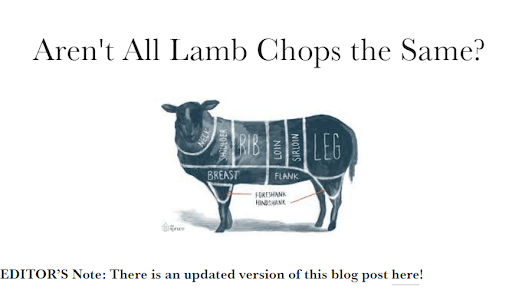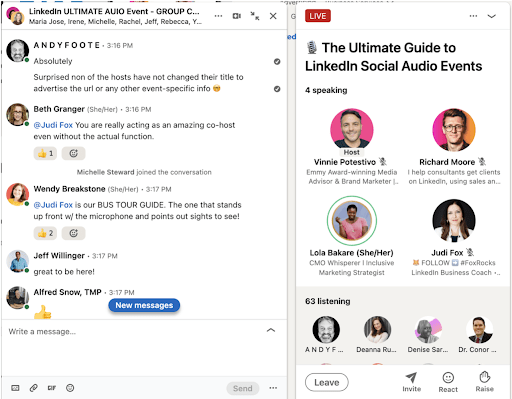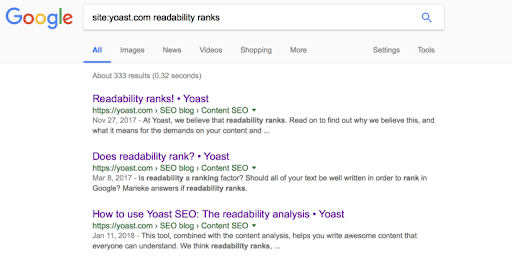17 Content Optimization Tips To Boost Traffic and Conversions
Content optimization can improve your site’s rankings and increase traffic. Follow these optimization tips to strengthen your content and SEO strategy.
Content creation is difficult — it can be hard to come up with new ideas and summon enough resources to develop unique content. Then, once the content is posted, it might not even rank or bring in traffic.
However, if you aren’t revisiting your existing content, you might be ignoring low-hanging fruit.
Content optimization, or rewriting and repurposing your existing content, can improve your search engine rankings and bring in new traffic to your site. At the same time, it doesn’t take as many resources to update your existing content as it does to create brand new content.
If you like the sound of improving your traffic and conversions without having to do the research again, read on for 17 content optimization tips that will help you with your SEO strategy:
- Make sure your blog posts are still relevant
- Improve high-ranking blog posts
- Develop Cornerstone content
- Double Check Keywords
- Repurpose existing content
- Improve internal linking structure
- Look out for keyword cannibalization
- Test buttons and links
- Optimize and replace images
- Rewrite Content to Match Search Intent
- Check Answerthepublic and Alsoasked
- Add resource links to every post
- Add quick navigation to blog posts
- Check your readability scores
- Update title tags, headings, and meta descriptions
- Add/Update CTAs
- Promote content on social media
Looking to improve your content and SEO strategy? Check out Top Design Firm’s list of top SEO companies.
Need help selecting a company?
Based on your budget, timeline, and specifications we can help you build a shortlist of companies that perfectly matches your project needs. Get started by submitting your project details.
1. Make Sure Your Blog Posts Are Still Relevant and Update Them
Have you written a blog post about last year’s Christmas party or the Google algorithm updates of 2020? If yes, they might not be relevant any more. Not to worry; there are plenty of things you can do.
First, you can create a link to the top of the page saying that there’s an updated version of this information found on your blog. For this, however, you will need to have that written.
Alternatively, you can rewrite the post to be more relevant to today’s audience. Here’s an example of how other bloggers do it. This will certainly reduce your bounce rates.

Source: Electric City Butcher
You can also edit the existing article to reduce bloat on your site. Still, it's important that you add a note that the article has been updated so users know when it was published.
2. Improve High-Ranking Blog Posts
For this, you will have to do a quick traffic check on one of the platforms available for companies and marketers. See which blog posts are ranking and which keywords they rank for.
By targeting high-ranking blog posts, you can improve your rankings even further and grow traffic quickly. You may even want to target long-tail keywords that have fewer searches, but can bring in traffic as well. If your web page is already ranking for one term, it is likely to rank for another.
For example, if your website is ranking on the top of page two for “organic farming tips”, it might be worth updating your content or building a few backlinks to the post. This will improve its SERP position further.
3. Develop Cornerstone Content
You might want to turn pages and posts with the highest SEO potential into cornerstone content.
What is Cornerstone Content?
Cornerstone content is high-quality and informative content that reflects your business. As such, it should be highlighted on your site and should be easy to find.
This type of content is great for building your brand by providing information about your company. By answering common questions and delivering your brand message effectively, you can build credibility and increase conversions.
Additional Reading, ‘What Type of Article Should a Cornerstone Article Be?’
4. Double Check Keywords
Keyword research is essential when optimizing content. As any SEO specialist knows, search trends change over time. Even if your site is ranking highly for a certain keyword, search might be down, impacting traffic.
Keyword research helps organizations identify what people are searching for so they can create targeted content.
The keyword research process may also help you identify long-tail keywords that are easier to rank for. Even if a particular keyword has a small search volume, every little bit adds up and can drastically improve your site’s traffic.
Rather than letting existing content slowly lose traffic, you can continue to bring users to your site by updating keywords.
Once you’ve selected a target keyword, you can incorporate it into headings, meta descriptions, and more to improve the likelihood of ranking.
Additional resource, ‘4 Steps to Identify Target Keywords for Small Businesses.’
5. Repurpose Existing Content
In case you are really struggling with coming up with new content for the next post, you might want to look for inspiration in existing content.
Maybe you have led a workshop and took a transcript of it? Or interviewed someone? Using these pieces of content will help you come up with something unique and interesting your audience will appreciate.
Here are a few ideas to help you repurpose existing content:
- Turn existing content into a PowerPoint
- Turn content into a Guide
- Share content as a PDF
- Turn blog posts into Videos
- Create an audio download
- Create a social media tips series using an existing blog
Turn Existing Content into a PowerPoint
Thanks to the high popularity rate of presentations in higher education, you will not be surprised that people would rather watch a presentation than read a very long blog post. Publish your presentation directly to LinkedIn and see your feed activity increase.
Turn Content Into a Guide
The most powerful word in the English language is FREE. So if you are missing a lead magnet or two, you can easily turn your existing content into a guide, presentation, or even eBook. Of course, you will have to do a lot of editing to make a few related pieces of content fit together perfectly.
Share Content as a PDF
Downloadable PDFs that include additional information, such as whitepapers, templates, and checklists are really valuable for readers and can encourage clicks.
Additionally, PDF sharing sites are still popular. Most people doing research on various topics add “PDF” to their search queries. Let’s say that you have something valuable and educational to share that happens to have your contact details and website address on. That’s a win-win situation, even if you didn’t get to collect people’s email addresses.
Turn Your Blog Posts into Videos
Videos are powerful for one main reason — nearly 8 in 10 people prefer video over text when learning about a new product or service.
Users on your site are more likely to consume content in a video format than in big chunks of text. Especially Millennials whose attention span is shorter than that of a goldfish.
Additional reading, ‘10 Types of Videos for Your Marketing Strategy.’
Create an Audio Download from Existing Content
Believe it or not, audio content is more popular than ever. LinkedIn is experimenting with audios, but they can be sent in private messages, even emails.

Source: LinkedIn
Great way of standing out and getting your message across to auditory learners.
Create a Social Media Tips Series using Main Takeaways
If you are the type of content marketer who likes covering large topics and creating insightful posts, you might want to turn the main takeaways into social media posts.
This is a great way of filling your social media content calendar for a few months without having to spend days brainstorming. Plus, you can link back to the original post from social media platforms to encourage traffic.
6. Improve Your Internal Linking Structure
You might think that link building is all about getting other sites to link to you. However, improving your internal linking structure can enhance the performance of individual pages, too.
Search engine crawlers follow links on each web page in order to index each page. Additionally, these links provide context and show how different topics are related to one another.
By linking internally, you can make sure each page on your website gets crawled and indexed. Without it, your pages are unlikely to rank.
Additional reading, ‘Internal Links: A Guide to Building a Strategy that Works.’
7. Look Out for Keyword Cannibalization
Keyword cannibalization means that you have more than one page or post competing for the same keyword. As they are competing with each other, their individual results will be negatively affected. So if you notice that you have two pieces of content ranking for a keyword, you might want to combine them or target another keyword with one of the posts to avoid keyword cannibalization.
You can find out whether you are cannibalizing your own keywords by searching for your site and the keyword you're analyzing.
For example, Yoast did this by searching "site:yoast.com readability ranks."

Source: Google
The results only showed articles on Yoast's site that rank for they keyword "readability rank."
Once you’ve identified cannibalized keywords, remove less trafficked pages and redirect them to the more popular post.
8. Test All Buttons and Links
User experience has been getting more focus by Google in recent years. If you don’t provide a seamless browsing and purchasing experience (in short buyer’s journey) to your visitors, your rankings will suffer.
Gather your team and get them to test every button, link, url, and image. This test should be done every 3-6 months to ensure your site provides the best UX (user experience) as possible.
Alternatively, hire a top UX designer to redesign your site and improve your click through rate.
9. Replace Images Where Necessary
The easiest way of modernizing your site is to create new images and illustrations.They can help break up text, provide a better UX, and make it more likely for users to click on your article.
However, adding new images is a great way to improve your site’s SEO too. Images can be found in Google SERPs and are easily shared, which can bring traffic to your site.
Additionally, crawlers “read” alt text, which is a brief description of the image that appears if the image can’t load. By writing descriptive alt tags and including keywords, you can improve the accessibility of that webpage and your site’s rankings.
When revamping the images on your website, focus on your unique images and your blog featured images. This will make your content appear fresh again, too.
Additional reading, ‘Image Alt Text: What is It, How to Write It, and Why it Matters for SEO.’
10. Rewrite Content to Match Search Intent
Let’s say you wrote a blog post about relocating to work. You are getting a lot of traffic for years down the road. However, since then you have written an eBook you are using as a lead magnet.
It would be worth rewriting the blog post to switch the search intent from informational to transactional. Your keywords, structure, and CTA will likely change, but you will tap into existing traffic and grow your list faster.
11. Check Answerthepublic and AlsoAsked
Sometimes you just think that a lot has happened and changed in your industry since you wrote a particular piece. The best way of adding more meat to the bone and refreshing the content is checking Answerthepublic and Alsoasked.
These platforms can help you determine search intent and find out what people are searching for. This can help you keep tabs on trends and new keywords that you can target when optimizing content.
Alternatively, if you want to know what people are interested in at the moment, Quora might be a good platform to visit.
12. Add Resource Links to Every Post and Update Them
If you have written a long piece of content it is more likely that you will rank in search engines if you add resources.
Some bloggers will tell you that too many outgoing links will not be good for your site, but they also provide additional credibility to your own site.
As a rule of thumb, you should only link to reliable authority sites. However, if you’re worried about the strength of your external links, only add nofollow links.
13. Add a Quick Navigation to Long Blog Posts
People tend not to read these days. In fact, they seem to be skimming. That’s why you will have to add quick navigation to blog posts that are longer than 1000 words.
It will help your visitors determine in just a few seconds whether or not you cover the answers they are looking for. Moreover, by clicking on the headline they will land at the exact spot where you answer their questions. This change will definitely improve your user experience.
14. Check (and improve) Your Readability Scores
As search engine bots are becoming smarter, they are looking for readability issues to determine whether it was a human that wrote the piece of content.
There are many readability score systems, and Yoast has its own algorithm to help you out. If in any doubt, you can check Readability Formulas to get a report. Consider the reading age and education level of your audience before you set a target reading age.
15. Update Title tags, Headings, and Meta Descriptions
It is recommended that you review and revise your SEO strategy at least twice a year. Once you have the reports and see what you are ranking for and the room for improvement, you will be able to update your Title tags, Meta Descriptions and Meta keywords. Sometimes doing this alone can take you from page 2 to the first page of Google SERPs.
16. Add/update CTAs
Have you recently updated your lead magnets or offerings? Maybe you implemented a new scheduling calendar. It would be a shame losing leads because you didn’t bother checking that your call-to-actions work and are relevant to the content and your marketing goals.
17. Promote Through Fresh Creatives on Social Media
Once you have worked on on-site content optimization, it is time to relaunch your fresh pieces. Share them on social media using brand new creatives, quotes, teasers, and insights. This will make them look brand new - and for most of your followers they will be - and position yourself as an expert at the same time.
You don’t have to do all the above to improve your content performance. Find the ones that are most relevant to you and schedule some time for content updates.
Content Optimization Tools
Optimize Existing Content to Increase Traffic
Content creation can be difficult, and getting a webpage to rank on SERPs can be even harder. By regularly optimizing content to target new keywords, improve internal linking, and provide better value to readers, you can improve your site’s performance. Follow these tips to improve your content marketing strategy.
Looking to improve your content and SEO strategy? Check out Top Design Firm’s list of top SEO companies.
Additional Reading:
Need help selecting a company?
Based on your budget, timeline, and specifications we can help you build a shortlist of companies that perfectly matches your project needs. Get started by submitting your project details.